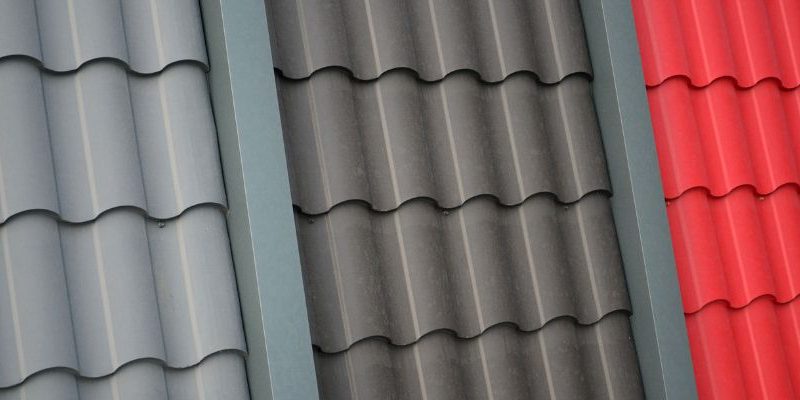Estimating roofing materials accurately is crucial for ensuring you purchase the right amount of materials, saving both time and money. Whether you’re planning a DIY project or hiring professionals, understanding how to estimate roofing materials can help you make informed decisions. This guide will walk you through the steps of calculating the required materials, considering various factors such as roof type and size. For expert assistance, consider engaging pristine roofing and outdoor services to ensure a seamless roofing project.
Measuring Your Roof

The first step in estimating roofing materials is to measure your roof accurately. Proper measurements are essential to avoid overbuying or running short on materials.
Calculating Roof Area
- Step 1: Measure the Length and Width: Measure the length and width of each section of your roof. Use a tape measure and ensure you record these measurements accurately.
- Step 2: Calculate the Area: Multiply the length by the width to get the area of each section. For complex roof designs, break down the roof into simpler shapes, calculate each area, and then sum them up.
Adjusting for Roof Pitch
- Understanding Roof Pitch: Roof pitch is the slope of the roof and is typically expressed as a ratio of the rise over the run (e.g., 4:12).
- Adjusting for Slope: To account for the roof pitch, you need to multiply the area by a pitch factor. Use a roofing pitch chart to find the correct multiplier for your roof’s slope.
Considering Waste Factor
- Allow for Waste: Always include a waste factor to account for material loss due to cutting and fitting. Typically, a 10-15% waste factor is added to the total area.
Calculating Material Needs
Once you have the total roof area, you can calculate the specific materials needed. Here are the steps for estimating the top 5 roofing materials.
Asphalt Shingles
- Coverage: Asphalt shingles typically come in bundles, with three bundles covering 100 square feet (1 square).
- Calculation: Divide the total roof area by 100 to determine the number of squares needed. Multiply by three to get the total number of bundles required.
Metal Roofing
- Panel Size: Metal roofing panels vary in size, commonly available in 3-foot wide panels.
- Calculation: Divide the total roof area by the coverage area of one panel. Include the waste factor for accurate estimation.
Slate Roofing
- Tile Size: Slate tiles are usually sold by the square (100 square feet).
- Calculation: Divide the total roof area by 100 to determine the number of squares needed. Add the waste factor, as cutting slate tiles generates waste.
Tile Roofing
- Tile Size: Tile roofing materials are typically measured by the square.
- Calculation: Similar to slate, divide the total roof area by 100 and include the waste factor to get the total number of tiles required.
Wood Shingles and Shakes
- Bundle Coverage: Wood shingles and shakes come in bundles, with four bundles covering one square (100 square feet).
- Calculation: Divide the total roof area by 100 to find the number of squares. Multiply by four to determine the total number of bundles needed.
Additional Materials
In addition to the primary roofing materials, you’ll need to estimate other essential components.
Underlayment
- Purpose: Underlayment provides an additional layer of protection against moisture.
- Calculation: The underlayment coverage should match the total roof area plus the waste factor. Most underlayment is sold in rolls covering 400-450 square feet.
Flashing
- Purpose: Flashing prevents water from seeping into joints and valleys.
- Calculation: Measure the linear feet of all areas requiring flashing (valleys, chimneys, vents). Purchase additional lengths to account for cuts and overlaps.
Nails and Fasteners
- Quantity: The number of nails or fasteners depends on the roofing material. Asphalt shingles require about four nails per shingle, while other materials have specific requirements.
- Calculation: Consult manufacturer guidelines for the exact quantity needed based on the roofing material used.
Final Wording
Estimating roofing materials involves careful measurement and consideration of various factors, including roof pitch and waste allowance. By understanding how to calculate the required materials for asphalt shingles, metal roofing, slate, tile, and wood shingles, you can ensure a successful roofing project. For precise estimates and professional installation, engaging pristine roofing and outdoor services is highly recommended. They can provide expert guidance and ensure your roof is both beautiful and durable, protecting your home for years to come.
FAQ’s
How do I accurately measure the area of my roof for estimating materials?
To measure your roof accurately, start by measuring the length and width of each section of your roof. Multiply these measurements to get the area of each section. For complex roof designs, break the roof into simpler shapes, calculate each area, and sum them up. Remember to adjust for the roof pitch using a pitch factor to get the actual surface area.
What is the significance of the roof pitch in estimating roofing materials?
The roof pitch affects the total surface area of the roof. A steeper pitch increases the surface area compared to a flat roof. To account for this, you need to multiply the flat area measurement by a pitch factor, which adjusts the measurement to reflect the actual area. This ensures you buy enough materials to cover the roof adequately.
How do I account for waste when estimating roofing materials?
When estimating roofing materials, it’s essential to include a waste factor to cover material losses from cutting, fitting, and mistakes. Typically, a waste factor of 10-15% is added to the total area. This extra percentage ensures you have enough materials to complete the project without running short.
What additional materials should I consider when estimating my roofing project?
Besides the primary roofing materials, you should estimate the quantity of underlayment, flashing, and nails or fasteners. Underlayment provides an extra layer of moisture protection, flashing prevents water infiltration at joints and valleys, and nails or fasteners secure the roofing material. Ensure you calculate the total area and add the appropriate waste factor for these materials as well.
How do I estimate the number of shingles needed for my roof?
To estimate the number of shingles, first calculate the total roof area in squares (100 square feet = 1 square). Asphalt shingles typically come in bundles, with three bundles covering one square. Divide the total roof area by 100 to determine the number of squares, then multiply by three to get the number of bundles needed. Remember to add a waste factor to your calculations.







